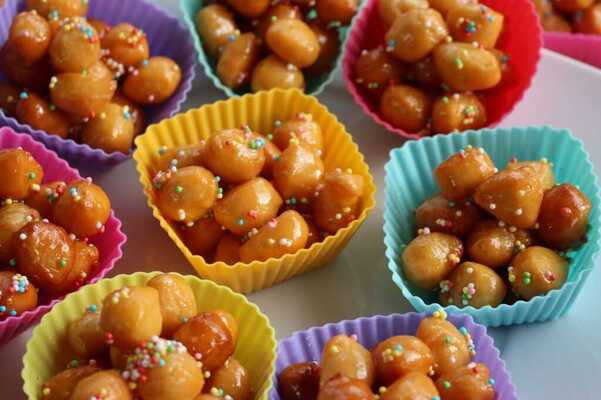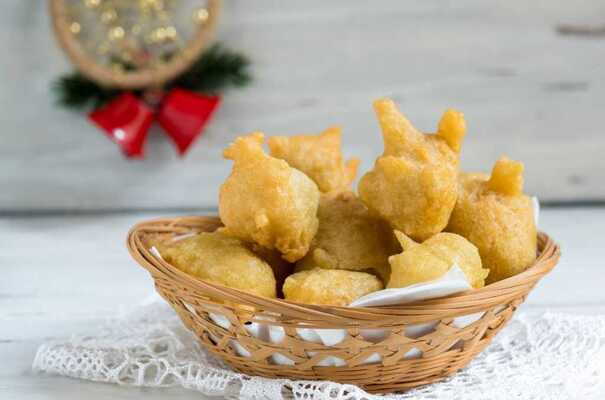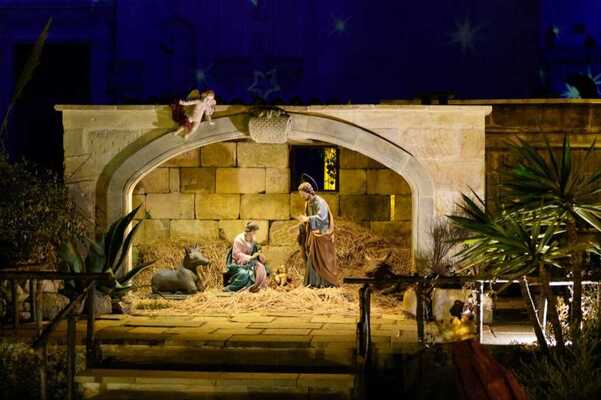Apulian Christmas at the table
Christmas is the most magical holiday of the year which brings with it infinite traditions, rites, legends, proverbs and popular sayings, which combine the sacred with the profane. It is certainly the most heartfelt holiday and is first and foremost a moment of aggregation and union to spend with loved ones: I’m from Salento and I do not miss being in the company of my family on those days! The Christmas period is therefore a congenial period to experience Christmas in perfect Apulian style, especially at the table.
The preparation of typical foods for the Christmas period is a thought that haunts Salento grandmothers very soon! So let’s take a dive into Christmas of the past, to see how this holiday was experienced by our ancestors. According to tradition, there had to be thirteen dishes for Christmas lunch even if, in the past, the economic conditions of the family were certainly not very good and then the ingredients were also counted in order to arrive at the canonical number thirteen. Surely, ciciri and tria, purciddhuzzi and ncarteddhate could never be missing.

Purciddhuzzi
The purciddhuzzi, so called because they had the shape of a little pig’s snout, with a dough similar to the cartellate and flavored with citrus fruits, fried in boiling oil and decorated with sweets, are a recipe of Persian origin, brought by the Arabs to Spain and then by the Spaniards in Puglia.
Ncarteddhate
The ncarteddhate, with the name “incartocciate” and the arabesque shape, are spirals of sweet dough fried and then immersed in cooked wine. Their shape resembles a rose but tradition also associates them with the halo of Baby Jesus. Even these, fried and then “candied“, i.e. dipped in heated honey and then sprinkled with sugar, were served together with other sweets, such as anisetti, which were small and multi-coloured sugared almonds, similar to grains of wheat. You can enjoy fragrant ones while doing Christmas shopping at the Santa Lucia Fair or the Pupi Fair in Piazza Sant’Oronzo, two fundamental moments of Christmas in Lecce. Some scholars derive this dessert from a Moroccan specialty, or rather from the most typical Moroccan dessert, cebakeia, prepared during the Ramadan period.

Almond paste fish
Another culinary custom on Christmas Eve is the fish made with almond paste which recalled Christ, represented in the Christian iconography of the first centuries with the symbol of the fish, which very often appeared in the catacombs where persecuted Christians took refuge. Through this delicacy we take a step back in the history of southern Italy since its origins date back to the 18th century and it is considered a diplomatic dessert that the nuns prepared as gifts to cardinals, bishops and important people. And it was the noble abbess Anna Fumarola of the Benedictine monastery of San Giovanni Evangelista in Lecce who introduced the use of filling almond fish with “faldacchiera“, a cream of eggs and sugar.
It seems incredible but even today the best Christmas fish is produced by them, the cloistered nuns of this convent in Via delle Benedettine 4, founded in 1133 by the Norman Count Accardo. The true people of Lecce know this address well and in the days before Christmas they queue at the side door of the convent, a sort of pilgrimage of taste and tradition.
The pittule
According to the Apulian tradition, “pittule” certainly cannot be missing from the table at Christmas! These can be simple or sweet, sweetened and filled with apple, or savory filled with boiled cauliflower, boiled turnip tops or with cherry tomatoes, onion, black olives and chilli pepper, or even with pieces of salted anchovies. Pittule, excellent if eaten hot, just removed from the frying oil, could be accompanied by lu cottu, that is, cooked wine, and, together with pucce and taraddhi, accompanied the entire Christmas period.

The mostaccioli
“Li Mustazzoli” or Mostaccioli are the symbolic biscuits of Salento and testify to the passage of the Arab population to the heel of Italy. It is a real local specialty, the pride of the fairs and patronal festivals where you can meet local artisans with their stalls, where you can buy or taste these delicacies which, since the end of the nineteenth century, from generation to generation, they represent a must in their production and in Salento pastry making. Mostaccioli are desserts of Arab origin and their preparation did not involve the use of yeast. These biscuits, which in other areas of Southern Italy are typically Christmassy, in Salento can be enjoyed at any time of the year and are ideal for breakfast, a snack or at the end of a meal, accompanied by an excellent glass of wine or liqueur.
Apulian Christmas at the table: 7, 24 and 25 December
Usually, on December 7, the eve of the Immaculate Conception, many families still observe fasting, with the only infraction of consuming lunch with a puccia, white and spongy bread, seasoned with tuna and capers and pittule.
Christmas Eve dinner is an institution. Preparations begin a few days before, the table is set with red and silver/gold tablecloths, and a fish-based menu is served: spaghetti with mussels or seafood risotto; tradition requires cod as a second course and countless side dishes.
Lunch on Christmas Day is meat-based: after a classic baked pasta or pasta with sauce/ragout, lamb with potatoes is the highlight.
On the 26th, Santo Stefano Day, many families treat themselves to a purifying broth after the binges of the previous days. For the most tenacious families, there is still room for another lunch!

Purcidduzzi salentini and Cartellate
If you ask a person from Puglia what the typical Christmas dish of their land is, they will mostly indicate a dessert, perhaps different depending on the province they belong to, but certainly a traditional holiday dessert.

Salento Pittule
Pittule are a typical dish of Salento gastronomy, handed down by housewives and by our mothers and grandmothers, they are a delicacy that is prepared especially in the autumn and winter period.

Salento and the magic of the nativity scene
What Christmas would it be without the nativity scene? Especially in our South, the tradition of setting up the nativity scene in one's homes is still alive and deeply felt, an extraordinarily poetic and romantic element, unlike the more recent Christmas tree.

